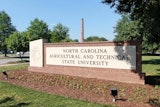The U.S. workforce could employ as many as 140,000 additional African-American and Latino college graduates in science, technology, engineering and math (STEM) fields annually if the gap in college completion in STEM by Blacks and Latinos closed to roughly match that of the White and Asian American STEM graduation rates, according to a new report released by the Washington-based Joint Center for Political and Economic Studies think tank.
“That figure is derived from the fact that African-Americans and Hispanics are under-represented in higher education generally and that, once they are there, graduate with degrees in [science and engineering] and [science and engineering-related] related fields at a far lower rate than their White and Asian American counterparts,” the report said.
In “STEM Urgency: Science, Technology, Engineering and Mathematics Education in an Increasingly Unequal and Competitive World,” the report’s co-authors investigate the gaps in STEM education among African-American and Latino students. Among key findings in the report are that 17 percent of employed African-Americans older than 25 and 21 percent of employed Latinos older than 25 have a college degree in a STEM field. This compares to 22 percent of employed Whites older than 25 and 43 percent of employed Asian Americans older than 25.
In other findings:
1) Increasing the number of African-American and Latino college graduates in science and engineering (S&E) fields to their overall proportion in the U.S. population would result in more than 60,000 new STEM graduates annually.
2) Increasing the proportion of African-American and Latino college graduates with S&E degrees to the rate attained by Asians alone would result in more than 48,000 new STEM graduates annually.
3) Doing both—increasing the graduation rates of African-Americans and Latinos in S&E programs to their share of the population and to reflect that of Asians—would increase the number of STEM-prepared graduates to more than 140,000.
“That’s a pretty significant statistic,” report co-author Joseph Miller said, referring to the annual estimate of 140,000 potential STEM professionals.
The report cites a number of troubling statistics describing the declining academic performance of young Americans. College-level graduation rates lag behind many other industrialized nations, and the U.S. ranks 47th worldwide in math and science education. Blacks and Latinos, in particular, fall short in preparedness for jobs in the technology sector, the report notes.
Miller pointed out that it’s important to emphasize that the STEM employment disparity should be primarily understood “in the context of income and wealth inequality in the U.S.” The report notes that addressing the STEM employment dilemma “is a solution for rising inequality,” he said.
“Growing economic inequality promises to have deleterious impacts on
our society if left unaddressed,” the report warns.
“Individuals and families left behind might earn their way to better standards of living but only if they have the skills to compete in a global economy. That is the opportunity STEM presents, in that STEM education gives people the wherewithal for employment in jobs that pay well,” concludes the report.















